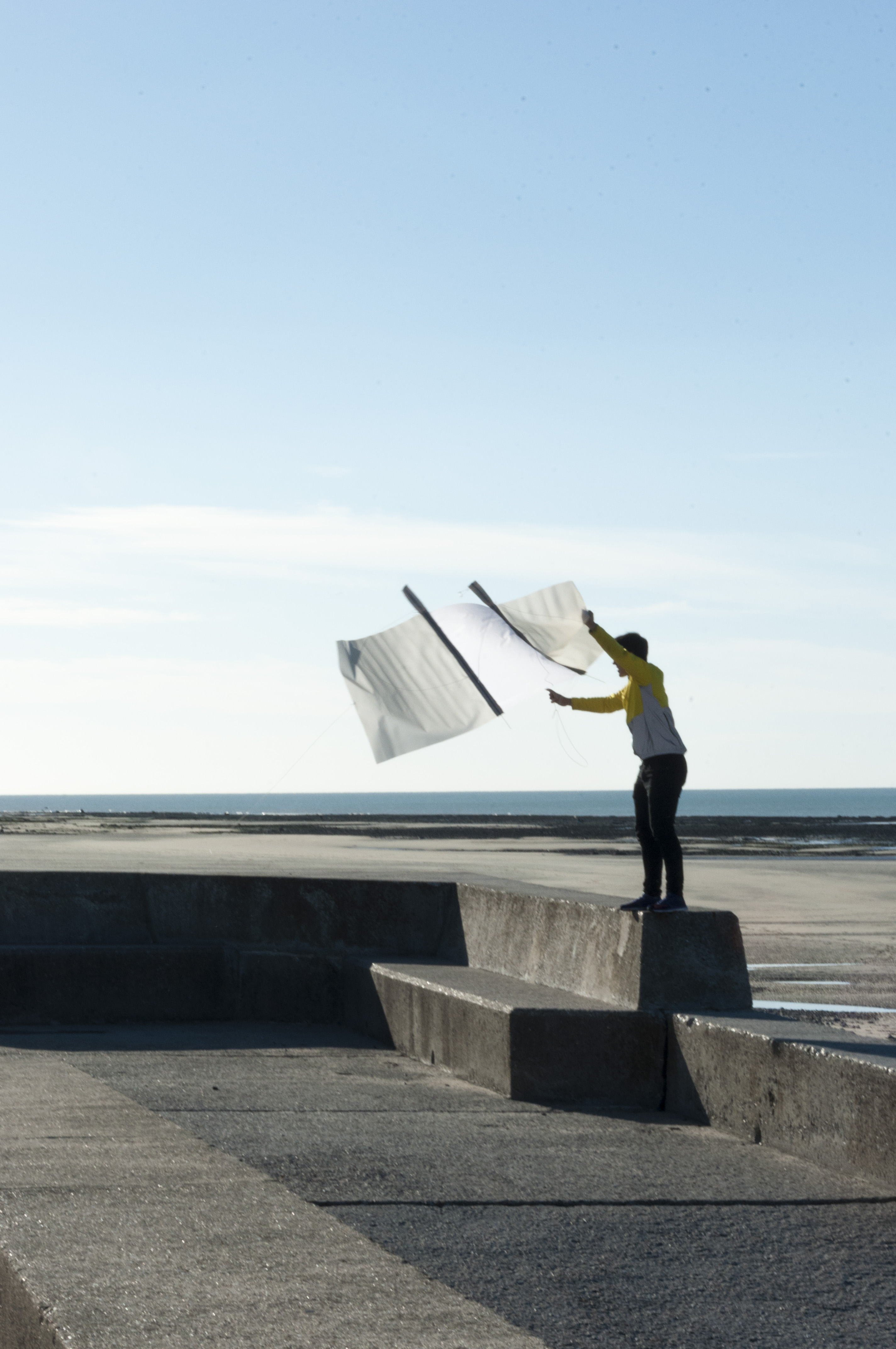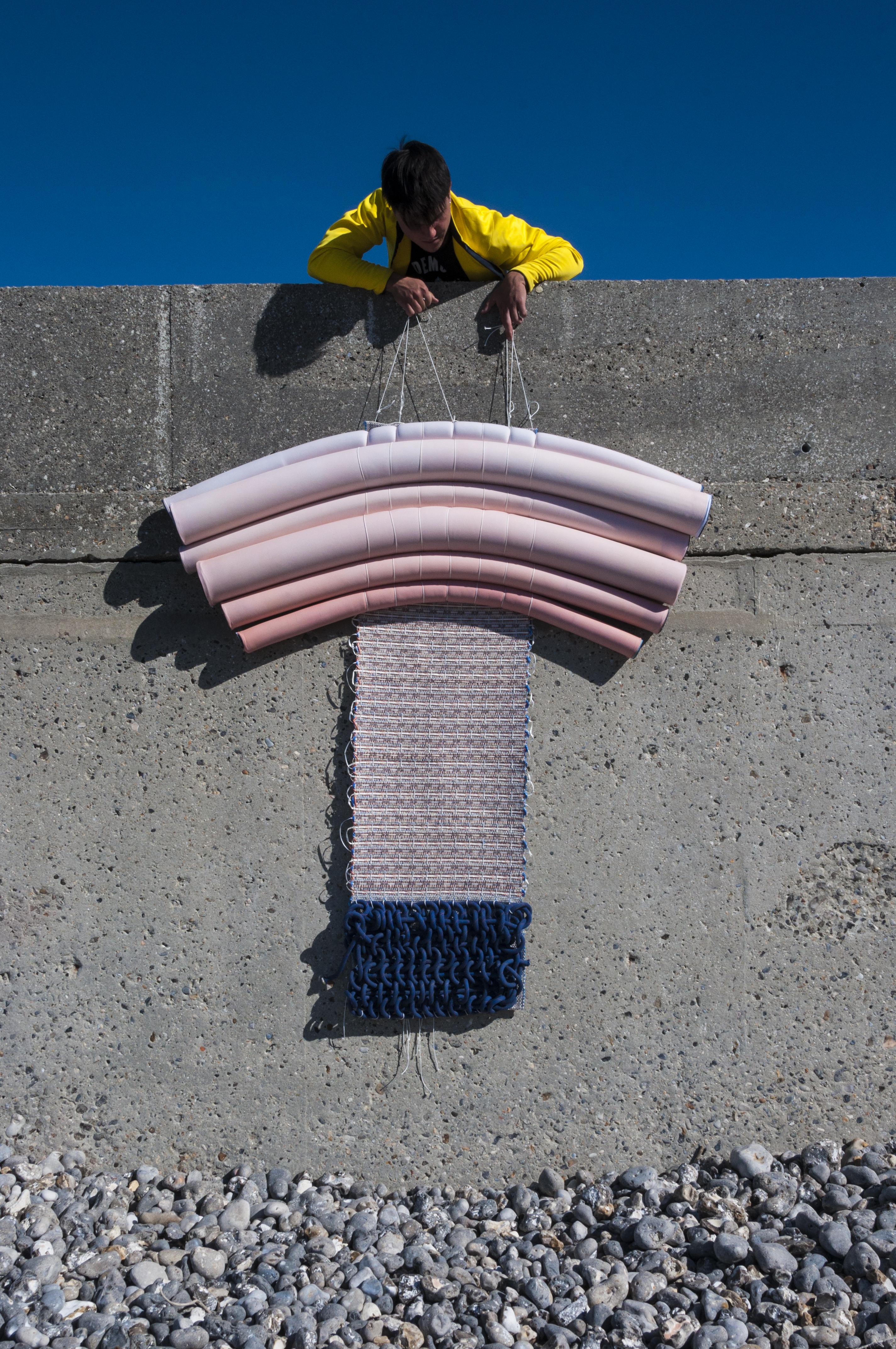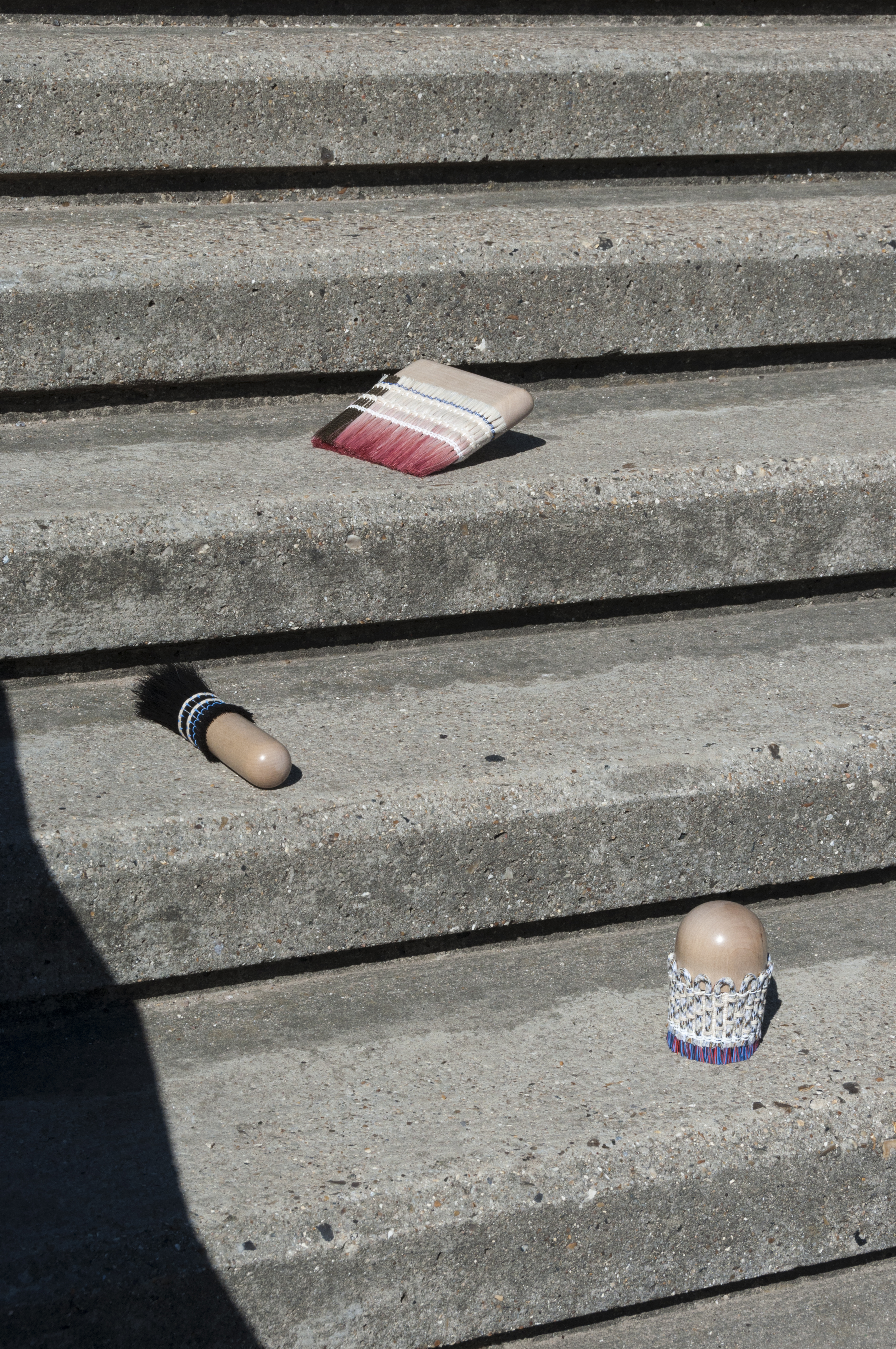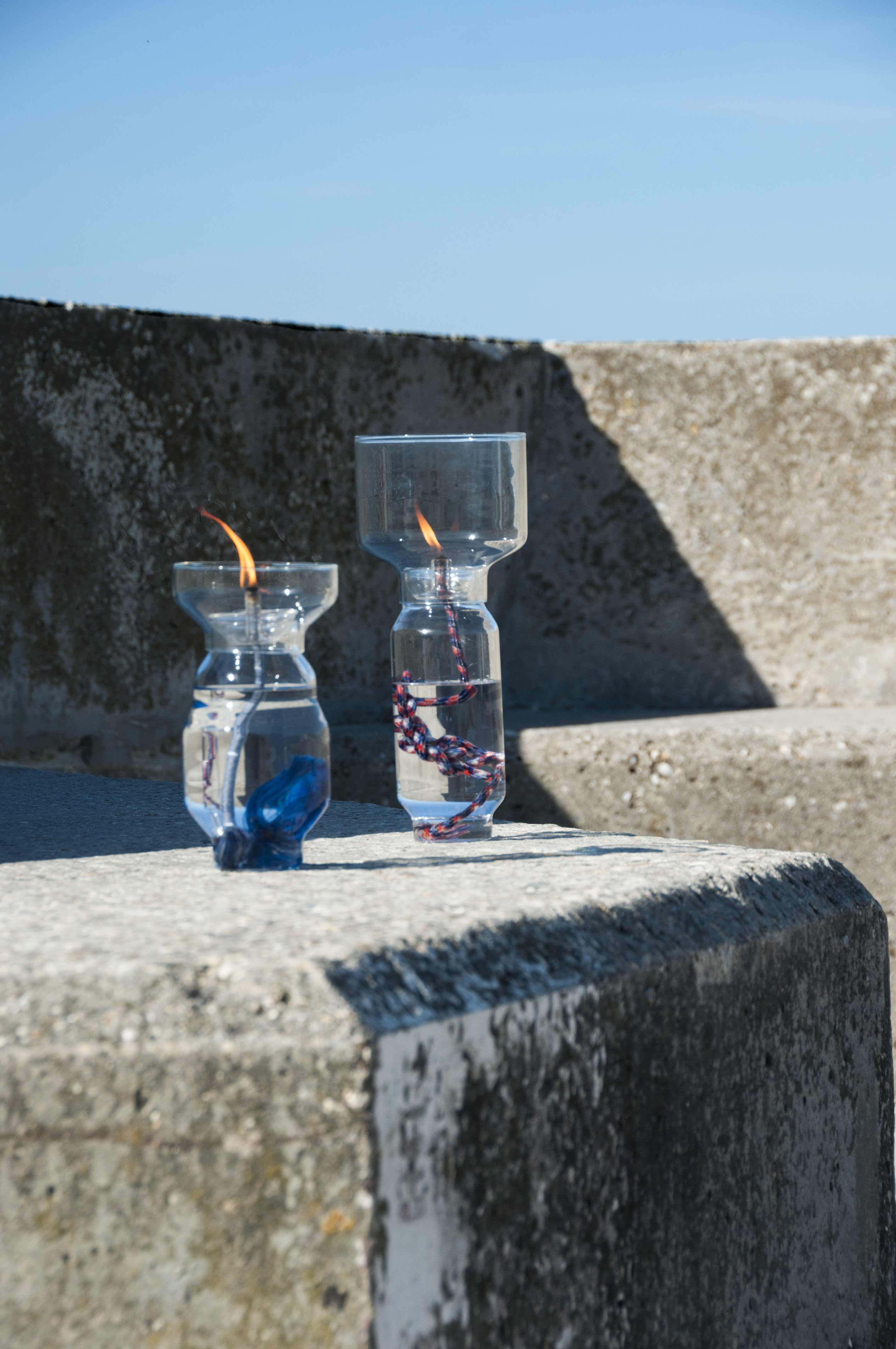The starting point of this research is the notion of habitat. What are the objects and acts that makes that we take possession of a place ? How to convert a space into a place ? The « living place » is built through the personal experience. Anywhere in the world, a habitat is composed by 4 elements : a roof, a mound, a hearth and an enclosure. You can find these elements in a hut or a tipi, a house or even in a building.
Inspired by « The Four Elements of Architecture » written by the german art historian Gottfried Semper in the 19th century, I developed 4 tracks. These 4 tracks leads to 4 objects that allows to take possession of the space. These objects do not tend to respond to the habitat in a functional way but more in its symbolical aspects. The textile here works like a construction tool. Far from just being simply a surface composition, the textile lies at the center of the object (in its shape and use), it is the essence of it.
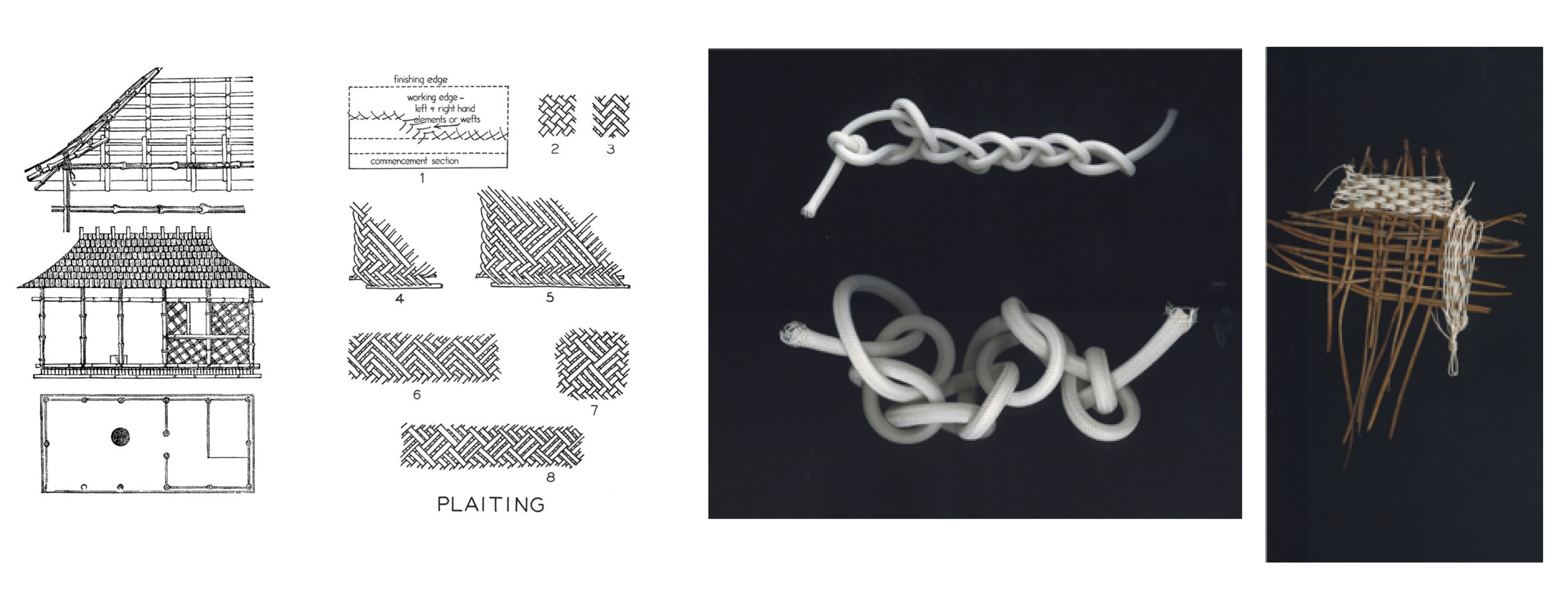
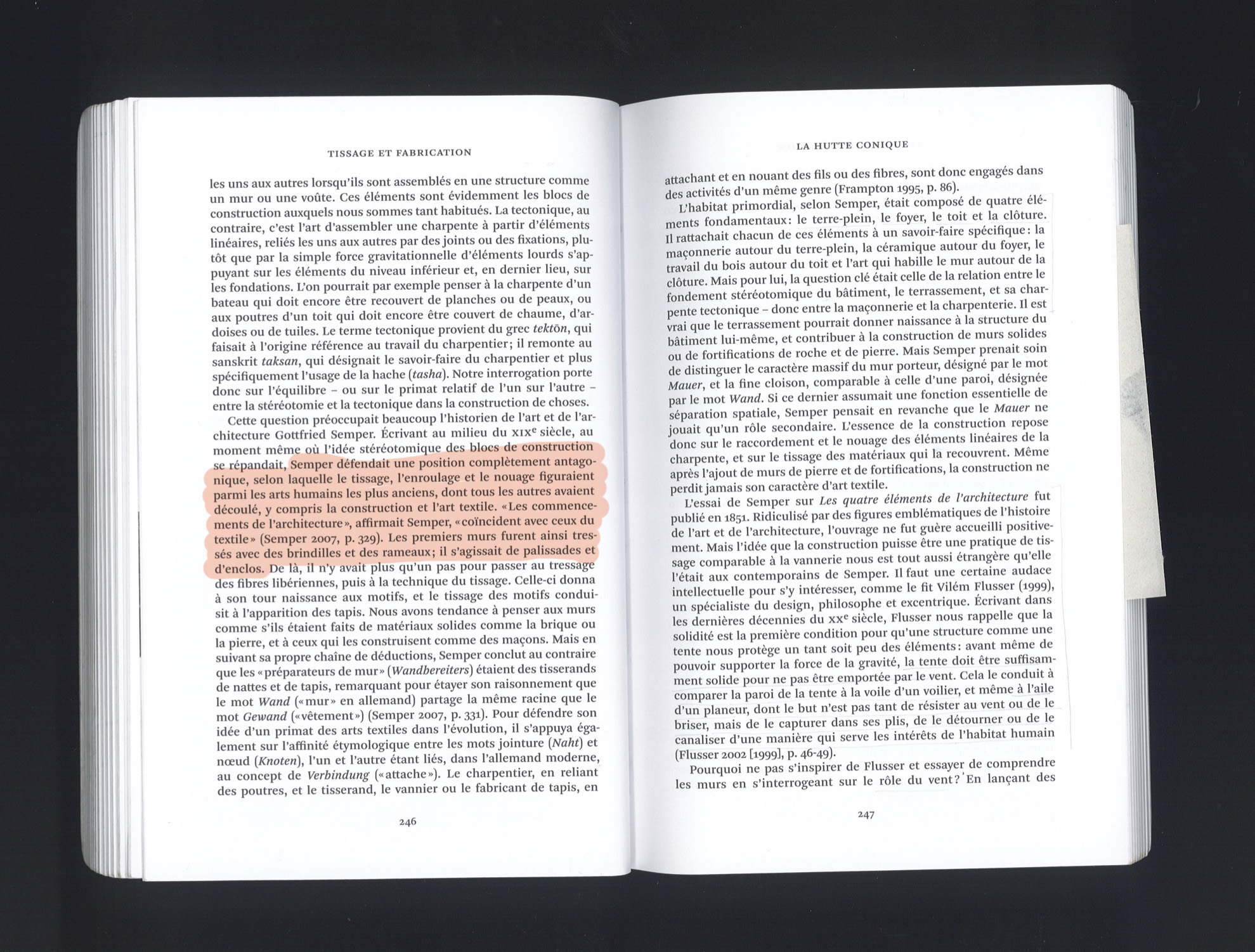
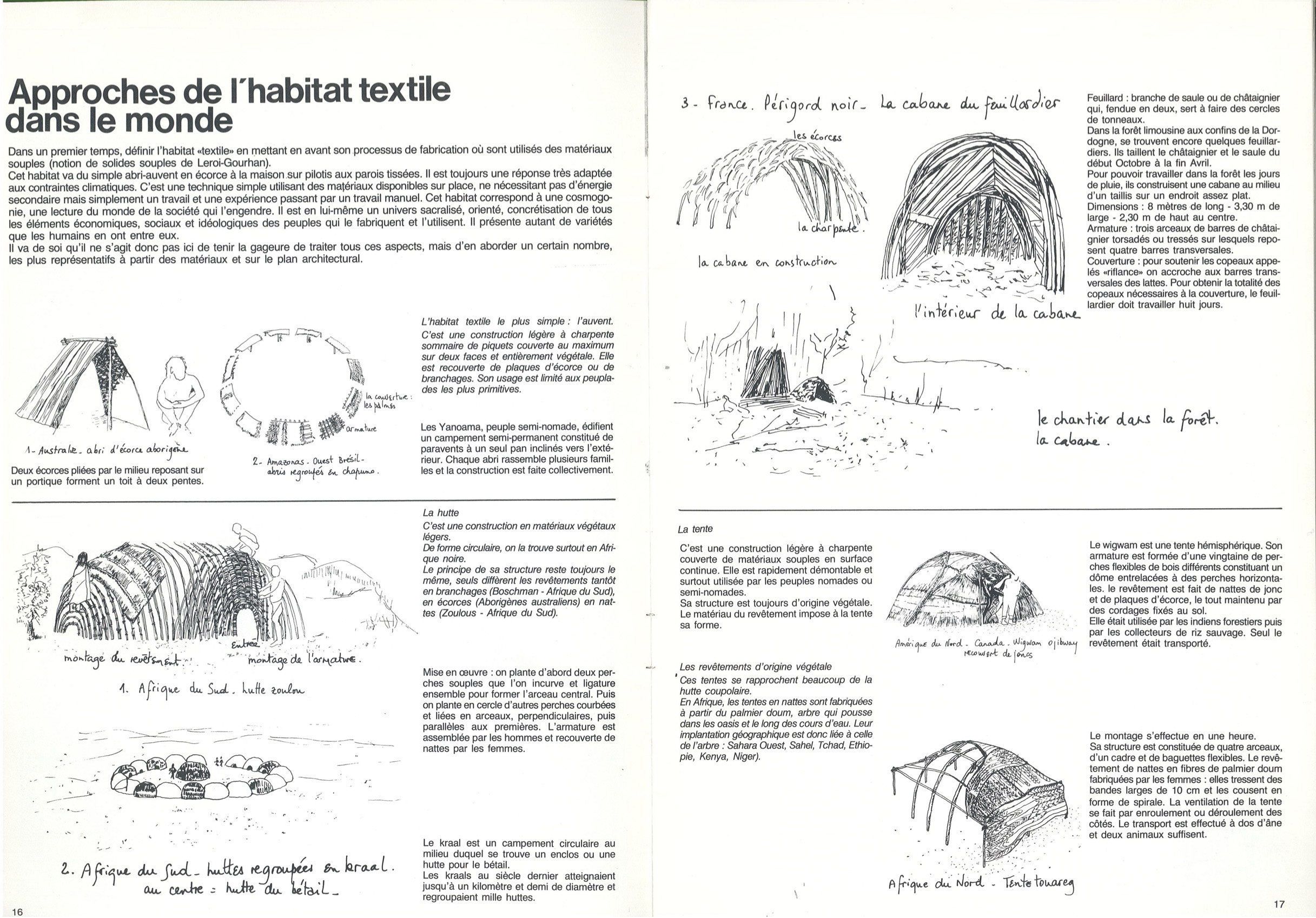


-The roof is converted into a canvas that protect: light, resistant and adaptable according to the needs and to the terrain on which we are.
-The mound is a carpet that can host life and its differents moments : it presents three parts according to the spaces and activities that can be found in a habitat (a threshold, a central part and a comfortable part that surrounds the whole).
-For me the enclosure is the limit between the outside and the domestic space. Therefore I designed a range of brushes for domestic activity. The gesture drawn by the brush, participates in the ritual of the cleaning/caring and thus to the construction of the domestic space feeling.
-The hearth is the fire that warms the place and bring light, around which people gather. Here it’s an oil lamp with a visible and delicate textile wick and modular glass elements containing the vegetal oil.
Explore the different tracks :
︎the roof is a sail
︎the mound is a carpet
︎not an enclosure, but brushes
︎oil lamps that makes us feeling home
Diploma project presented June 6th if 2018 at ENSCI-Les Ateliers.
Under the direction of the designer Jean-Baptiste Fastrez.
Mention for innovation.
Photos : Garance Maurer
ENSCI-Les Ateliers, 2018

